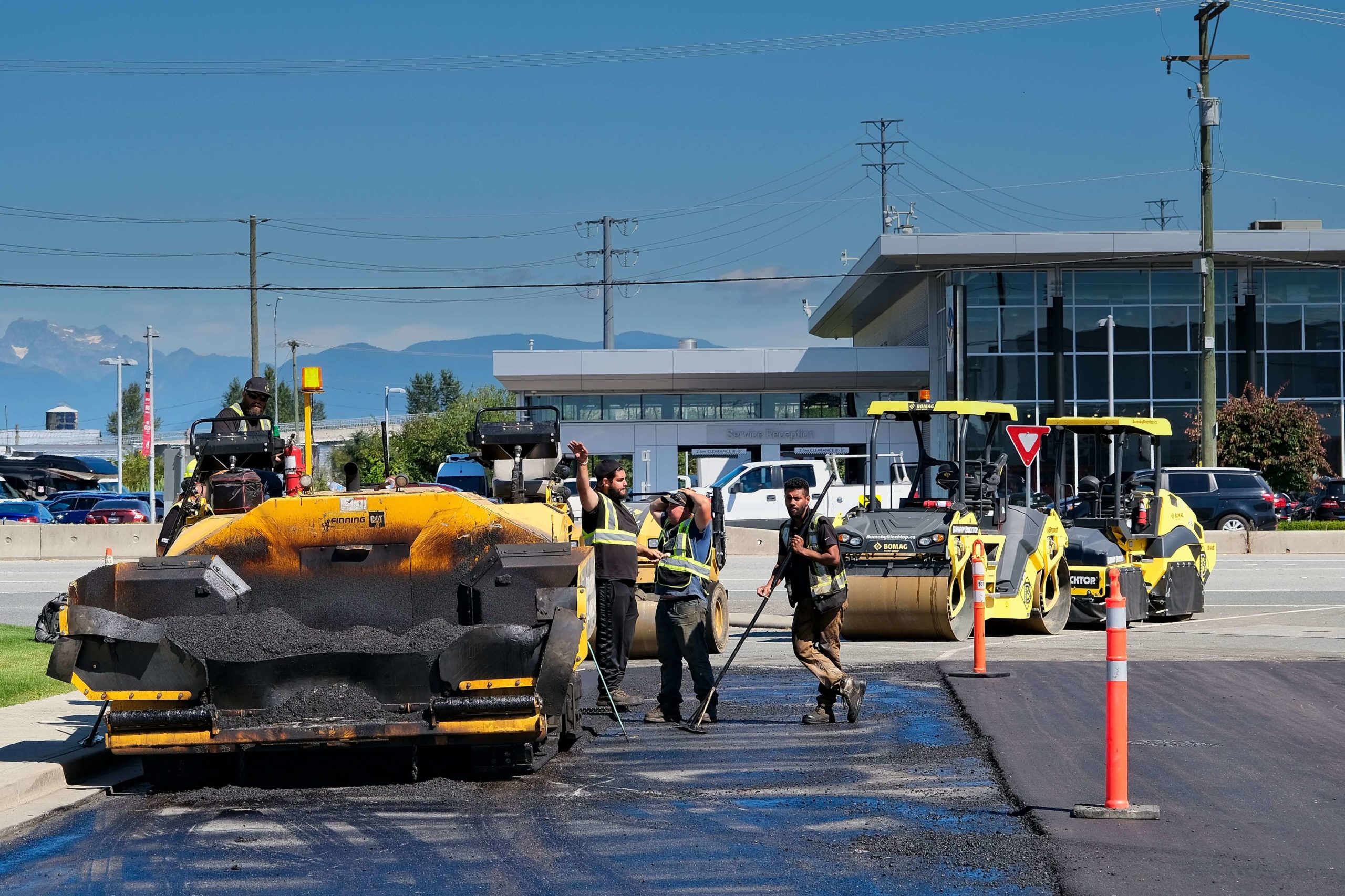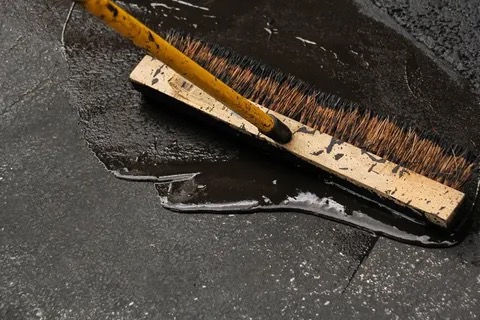Optimize Financial Investment Returns: Angled Parking Area Perfection with Asphalt Sealing
Optimize Financial Investment Returns: Angled Parking Area Perfection with Asphalt Sealing
Blog Article
Warm Mix Asphalt: A Lasting Option for Sidewalk
Hot Mix Asphalt (HMA) has actually emerged as a leading lasting choice for sidewalk services, supplying a myriad of environmental benefits and cutting-edge modern technologies. As the need for environment-friendly building methods grows, checking out the nuances of HMA's sustainability can provide beneficial understandings right into the future of pavement remedies.
Environmental Benefits of Hot Mix Asphalt

Additionally, Hot Mix Asphalt assists to alleviate city warmth island impacts. Its dark shade soaks up sunshine, reducing the amount of heat mirrored back right into the atmosphere compared to lighter-colored pavements. This can reduce ambient temperatures in metropolitan locations, lowering the need for cooling and inevitably lowering power usage.
Furthermore, Hot Mix Asphalt adds to improved stormwater administration. Its porous nature allows water to recharge and penetrate the sidewalk groundwater supplies, minimizing drainage and the threat of flooding. These environmental benefits make Warm Mix Asphalt a lasting selection for leading roadways and highways.
Power Effectiveness in HMA Manufacturing
Is power efficiency a crucial factor in the production of Hot Mix Asphalt (HMA)? Energy plays a significant role in the manufacturing of HMA, impacting both price and environmental sustainability. One vital aspect of power efficiency in HMA production is the usage of warm mix asphalt (WMA) technologies.
In addition, innovations in plant technologies have actually led to more energy-efficient HMA manufacturing processes. By optimizing energy usage in HMA manufacturing, the market can minimize its carbon footprint while keeping high-grade sidewalk products.
Recyclability of Hot Mix Asphalt
The recyclability of Hot Mix Asphalt (HMA) is a critical aspect of its sustainability and lasting environmental effect. HMA is just one of the most recycled materials in the United States, with over 100 million lots of recovered asphalt sidewalk (RAP) being recycled annually in brand-new sidewalk building. Reusing HMA uses numerous ecological benefits, such as reducing the requirement for virgin products, decreasing energy intake throughout manufacturing, and lowering the quantity of waste sent out to land fills.
The procedure of recycling HMA entails crushing the existing sidewalk, squashing it into smaller pieces, and mixing it with brand-new aggregate and asphalt binder to create a recycled mix. This recycled mix can typically carry out in addition to or even better than standard HMA, while requiring less resources and producing lower greenhouse gas discharges. By including RAP right into brand-new sidewalk tasks, roadway companies can conserve natural resources, decrease expenses, and lessen the environmental footprint of road construction and maintenance activities. Overall, the recyclability of HMA plays a substantial function in promoting lasting techniques within the sidewalk industry.

Long-Term Efficiency of HMA
Asphalt pavements demonstrate resilience and strength over a prolonged duration, mirroring the long-lasting efficiency of Warm Mix Asphalt (HMA) The longevity of HMA can be associated to its capability to withstand rush hour lots, extreme climate condition, and the results of aging. Research studies have actually shown that well-designed and appropriately built HMA sidewalks can last for two decades or more with normal maintenance. The secret to optimizing the long-term performance of HMA lies in utilizing high-grade products, following best methods in building and construction, and implementing effective maintenance methods. Correct water drainage, regular assessments, and prompt repair work are necessary for maintaining the architectural honesty of HMA sidewalks over time. Additionally, developments in HMA innovation, such as using polymer-modified binders and warm mix asphalt, have even more improved the toughness and durability of HMA pavements. By prioritizing quality construction and maintenance practices, HMA remains to prove itself angled parking as a affordable and sustainable service for long-lasting sidewalk framework.

HMA: Longevity and Sustainability
Demonstrating both sturdiness and sustainability, Warm Mix Asphalt (HMA) has ended up being a keystone in the construction of durable sidewalk infrastructures - commercial parking lot paving. HMA's resilience comes from its capacity to hold up against heavy tons, rough weather, and high website traffic quantities, making it a trusted choice for highways, freeways, and flight terminal runways. The make-up of HMA, which typically includes aggregates, binder, and filler, plays a vital function in improving its durability and resistance to deterioration
Furthermore, HMA's sustainability depends on its recyclability and energy-efficient manufacturing procedure. The capacity to recycle redeemed asphalt sidewalk (RAP) in brand-new HMA combinations reduces the demand for virgin materials and decreases the ecological impact of sidewalk building and maintenance. Furthermore, the energy performance of producing HMA hinges on its lower mixing temperatures compared to various other pavement products, resulting in reduced energy intake and greenhouse gas exhausts.
Verdict
In final thought, hot mix asphalt (HMA) provides a lasting option for pavement with its ecologically friendly characteristics. HMA's recyclability, power efficiency in production, and lasting durability make it an environment-friendly option for road construction.
HMA is one of the most recycled products in the United States, with over 100 million loads of reclaimed asphalt sidewalk (RAP) being recycled annually in brand-new pavement building.The procedure of reusing HMA entails crushing the existing sidewalk, crushing it right into smaller sized pieces, and mixing it with new aggregate and asphalt binder to create a recycled mix.Asphalt sidewalks show durability and strength over an extended duration, reflecting the long-lasting efficiency of Warm Mix Asphalt (HMA) Additionally, developments in HMA modern technology, such as the usage of polymer-modified binders and cozy mix asphalt, have actually further boosted the resilience and durability of HMA sidewalks. The ability to reuse reclaimed asphalt pavement (RAP) in brand-new HMA mixes lowers the need for virgin materials and minimizes the environmental effect of pavement construction and maintenance.
Report this page